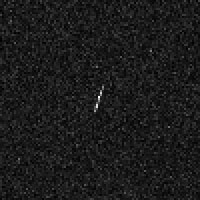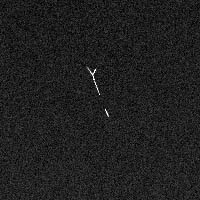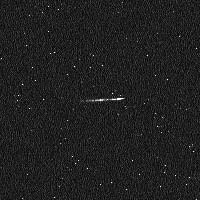Another problem beyond your control is the effect of high energy particles. We live in a sea of radiation; alpha, beta and gamma rays from radiactive decay in the rocks and other materials around us, cosmic rays, neutrinos and other exotic particles from space. Several of these can be detected by CCD detectors.
The most common particles to be detected are high energy cosmic rays from space. While you are trying to detect photons from space you will also inadvertantly record many of these other cosmic wanderers. These particles are not stopped by the atmosphere and can easily penetrate the metal case of your CCD camera. The only way to avoid cosmic rays is to get under a few hundred feet of rock, not the best place to set up a telescope.
High energy particles will most often show up as a bright point in the image where one of these particles slammed through the structure of the CCD and deposited a large amount of charge in a pixel. Occassionally the particle will be passing through at a shallow angle to the plane of the CCD and affect a number of pixels along its path creating a bright streak. Even more rare will be events where the particle decayed in the CCD structure, when this happens the streak may stop and there will be another streak at another angle or a set of dashes where some decay product skipped away.
As an experiment I took a camera based on an E2V CCD87 back thinned CCD and took continuous 10 minute dark frames overnight. In the morning I processed these frames by subtracting a master dark frame from each. What was left in each frame was a few bright points or streaks, each representing some high energy event that had occurred during the night. There were and average of five to ten events on each frame.
Again the only real solution is to learn to live with these rogues. The part to remember is that they are random and cannot be corrected with a calibration frame. Taking many frames and averaging or median combining will help remove these events as they will exist in only one frame. Particularly bad hits may require hand editing to correct.
These events can also occur in dark calibration frames. If not corrected the events will then be applied to all of your frames when the dark is subtracted. The answer is again to take multiple frames and combine to create a master dark.


